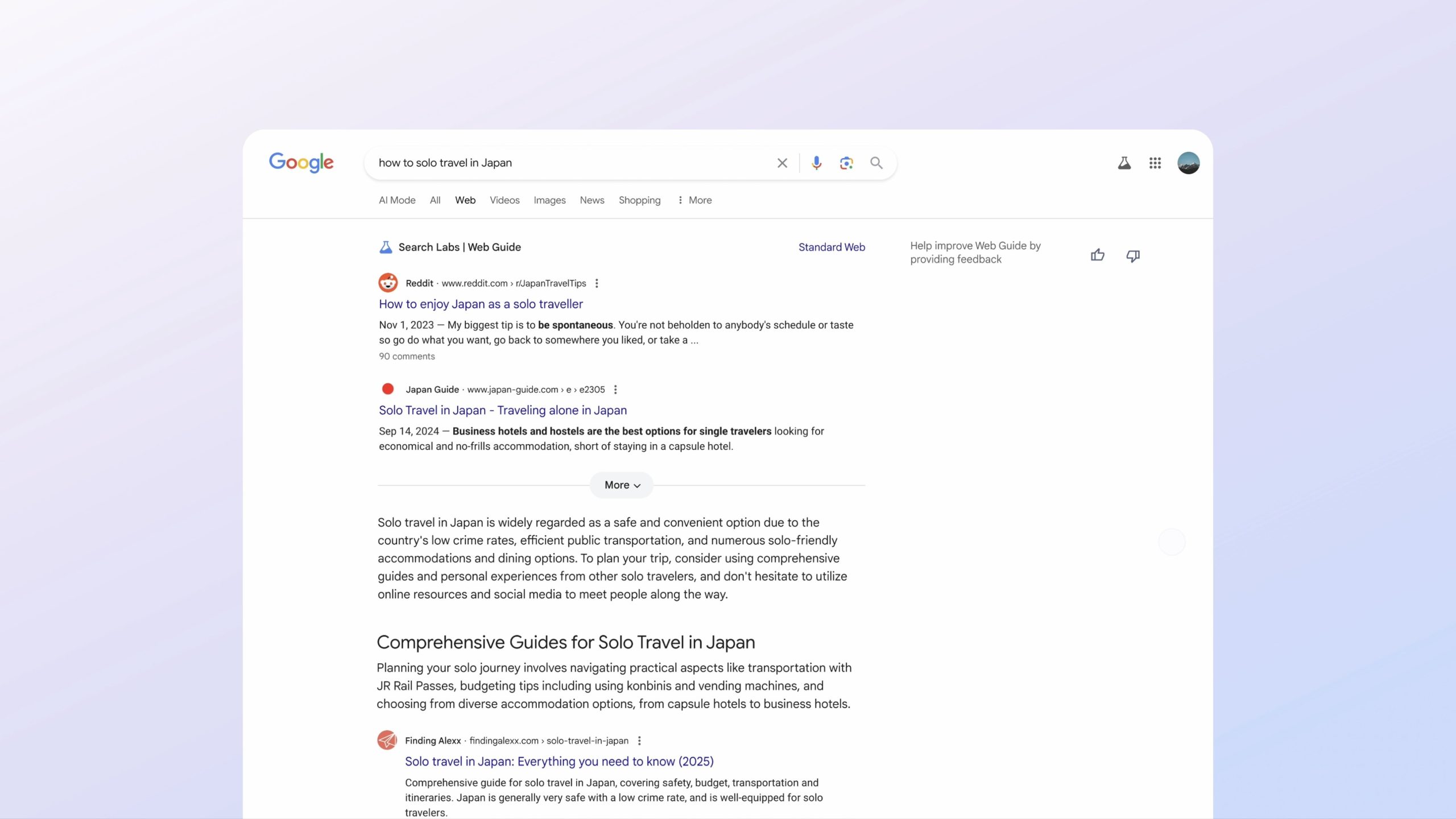Now Reading: Google’s New AI-Powered Search Wins Praise
-
01
Google’s New AI-Powered Search Wins Praise
Google’s New AI-Powered Search Wins Praise

Quick Summary
- Feature Introduction: Google has launched “Web Guide,” an experimental AI-powered search tool designed to simplify navigation of search results by grouping relevant links into categories.
- Functionality: Unlike previous AI features like “AI Mode” or “AI Overviews,” Web guide focuses on organizing links for clarity, allowing users to click and explore content without relying heavily on AI-generated summaries.
- Grouping Examples: Results are categorized with titles such as “Aggregated Generative AI news” or “MacBook model Comparisons,” featuring direct links and short descriptions.
- Utility Observations: The feature excels at surfacing niche websites and lesser-seen link options that typically appear later in traditional search pages,offering better visibility for less prominent sources.
- Experimental Stage: While promising, improvements like more relevant groupings and expanded link options are recommended by early testers to make Web Guide more consistently useful across diverse searches.
- User Access Instructions: Web Guide is available via Google Labs. Users can enable it on the platform’s Search Labs page.
Indian Opinion Analysis
Google’s introduction of the Web Guide aligns with efforts to refine user experience in online searching without fully automating content delivery through generative AI-a move significant from both commercial and ethical perspectives. By prioritizing link visibility over summaries generated by neural networks, this approach incentivizes user engagement with original content rather than relying solely on synthesized answers.For India, where internet usage is rapidly growing, tools like Web Guide could play a role in simplifying access to diverse types of information while supporting smaller or local websites that might or else get overlooked in conventional ranking systems. This democratized approach may encourage equitable participation among digital publishers-especially critical for India’s vast multilingual ecosystem.
The experimental nature of the feature suggests room for improvement, but its capacity to organize crowded information landscapes indicates potential utility amid rising digital dependency among Indian users seeking reliable sources across varied interests-from education tech products to community forums.



























